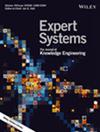Multi-model deep learning system for screening human monkeypox using skin images
Abstract
Purpose
Human monkeypox (MPX) is a viral infection that transmits between individuals via direct contact with animals, bodily fluids, respiratory droplets, and contaminated objects like bedding. Traditional manual screening for the MPX infection is a time-consuming process prone to human error. Therefore, a computer-aided MPX screening approach utilizing skin lesion images to enhance clinical performance and alleviate the workload of healthcare providers is needed. The primary objective of this work is to devise an expert system that accurately classifies MPX images for the automatic detection of MPX subjects.
Methods
This work presents a multi-modal deep learning system through the fusion of convolutional neural network (CNN) and machine learning algorithms, which effectively and autonomously detect MPX-infected subjects using skin lesion images. The proposed framework, termed MPXCN-Net is developed by fusing deep features of three pre-trained CNNs: MobileNetV2, DarkNet19, and ResNet18. Three classifiers—K-nearest neighbour, support vector machine (SVM), and ensemble classifier—with various kernel functions, are used to identify infected patients. To validate the efficacy of our proposed system, we employ a publicly accessible MPX skin lesion dataset.
Results
By amalgamating features extracted from all three CNNs and utilizing the medium Gaussian kernel of the SVM classifier, our proposed system achieves an outstanding average classification accuracy of 90.4%.
Conclusions
Developed MPXCN-Net is suitable for testing with a large diversified dataset before being used in clinical settings.

 求助内容:
求助内容: 应助结果提醒方式:
应助结果提醒方式:


